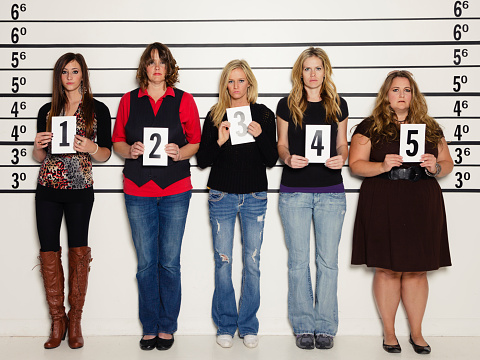Slide 1 of 4: Introduction
Authors: Ronald J. Comer, Princeton University and Jonathan S. Comer, Florida International University

Press the Next button to start this activity
Slide 2 of 4: 42.1 Eyewitness Testimony
This video looks at eyewitness memory, a topic that has attracted much psychological research attention in recent years. Research has shown that eyewitness memory, like all memory, is fallible. In the video, you will see a study in which a group of unsuspecting college students witness a disturbance in one of their classes. When asked to describe the disturbance immediately afterwards, many get critical details wrong.
- Chapters
- descriptions off, selected
- captions settings, opens captions settings dialog
- captions off, selected
- English Captions
This is a modal window.
Beginning of dialog window. Escape will cancel and close the window.
End of dialog window.
This is a modal window. This modal can be closed by pressing the Escape key or activating the close button.
This is a modal window.
Eyewitness Testimony
[INTRODUCTORY MUSIC]
DAVE ERICKSON: If you saw a crime, or were the victim of one, how well would you remember what you saw?
ROBYN NANCE: Eyewitness accounts are crucial in crime fighting, but their reliability is often in question. In fact, the Innocence Project says eyewitness misidentification is the single greatest factor in wrongful convictions.
DAVE ERICKSON: KXLY 4's Tori Brune joins us now, and Tori, you spent some time with investigators. Talk about what it takes to be a good witness.
TORI BRUNE: Investigators say a lot of people either don't react well in those intense situations, or they simply don't know what to look for. So we put a group of college students to the test to see what they would remember in an intense situation. If you want to grab a piece of paper and a pencil, you can test out your own witness skills. And Dave and Robyn are not off the hook. I have pens and paper for them, too. Let's see how everyone does.
We put a group of college students to the test. Helping us is former Spokane County Sheriff and current EWU Criminal Justice Professor, John Goldman. Playing the role of our bad guy is EWU police cadet, Kael Hammond. And our victims in this scenario are a group of unsuspecting college students. They will be interviewed by EWU police detective, Quincy Burns.
10 minutes after class starts—
KAEL HAMMOND: We need to talk about this.
JOHN GOLDMAN: We don't have time.
KAEL HAMMOND: No. We're going to take care of this.
TORI BRUNE: All right. Stop. What did you just see? What did the person look like who walked into the room? What did he say? Detectives say one of the best things someone who has just witness a crime can do, is to take a little bit of time and write down what they saw.
KAEL HAMMOND: You're gonna regret this. I will find you.
After the students in Professor Goldman's class took a few seconds to calm down, we told them this was just a test, and I had them take some notes of their own.
These are the descriptions the kids in the class gave me. Keep in mind, they're juniors and seniors majoring in criminal science and criminal justice. Their entire focus was at the front of the class. And even they didn't get it all right.
-Maybe 5'8".
-He looked like he was about like 6'3".
-Approximately six feet tall.
TORI BRUNE: Kael is 5'10", and in all fairness, height is difficult to judge. Let's see how they did on what he was wearing.
-He had, I believe, black sweatpants, and a black sweatshirt with a white t-shirt underneath.
-I believe the man was wearing a black cap, a black coat, a sweater and jeans.
-He was wearing a black hooded sweatshirt. I think it was Under Armour brand. I couldn't see, from the way he was standing, if it was or not. He had a black wool cap on, with an Eagle's logo on it. Blue jeans and dark shoes.
TORI BRUNE: Skyler hit the nail on the head. Kael had on a black hooded sweatshirt, black hat with an Eagle's logo, and jeans. But what most of them missed was a crucial piece of information given up, not in what Kael look like, but in what he said.
-He came in here very distraught. He mentioned that he was going to fail the class.
-He said, you'll be sorry. I will find you.
-He seemed very upset about a grade that Goldman had given him.
TORI BRUNE: All that is true, but it's this statement that could have really helped Detective Burns.
KAEL HAMMOND: I was just down talking to your secretary.
QUINCY BURNS: He made reference that he had just come from the professor's secretary. So now that narrow things down to our scope of our search. If we don't catch him right outside on the campus immediately, we can go back and talk to that secretary.
TORI BRUNE: Overall, Detective Burns said this class did a good job, and if this were a real crime, they would have had a good place to start. But as the old saying goes, the devil is in the details.
QUINCY BURNS: Pay attention to things that are unique to that suspect, that they just can't disregard, shed or change easily.
Slide 3 of 4: 42.2 Check Your Understanding
Instructions:
Answer the questions based on the video and your reading of the entire chapter.
Slide 4 of 4: 42.3 Activity Completed!
Activity results are being submitted...